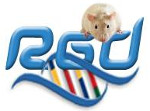Histones are modified in a p53-dependent manner and the modification, by opening up the chromatin, allows for the assembly of the general transcriptional machinery. While both histone methyltransferases and acetyltransferases are recruited to chromatin upon Tp53 binding to DNA, the p53-dependent histone acetylation is by far the best documented. Several acetyltransferases are recruited, the most notable case being Crebbp which not only modifies histones but also Tp53 (see p53 regulators). In addition, Mdm2, the main negative regulator of Tp53, can disrupt the interaction of Crebbp with Tp53 and Crebbp bound to Mdm2 promotes Mdm2 dependent Tp53 degradation. Thus, Crebbp exerts both a positive and negative control on Tp53 function. For more information check PMID 20679336.
The acetyltransferases are listed with aliases in parentheses, full name and links to gene report pages:
Crebbp (CBP, p300/CBP, KAT3A) – CREB binding protein
Kat2a (Gcn5) – lysine acetyltransferase 2A
Kat2b (pCAF) – lysine acetyltransferase 2B
Kat5 (Tip60) – lysine acetyltransferase 5























